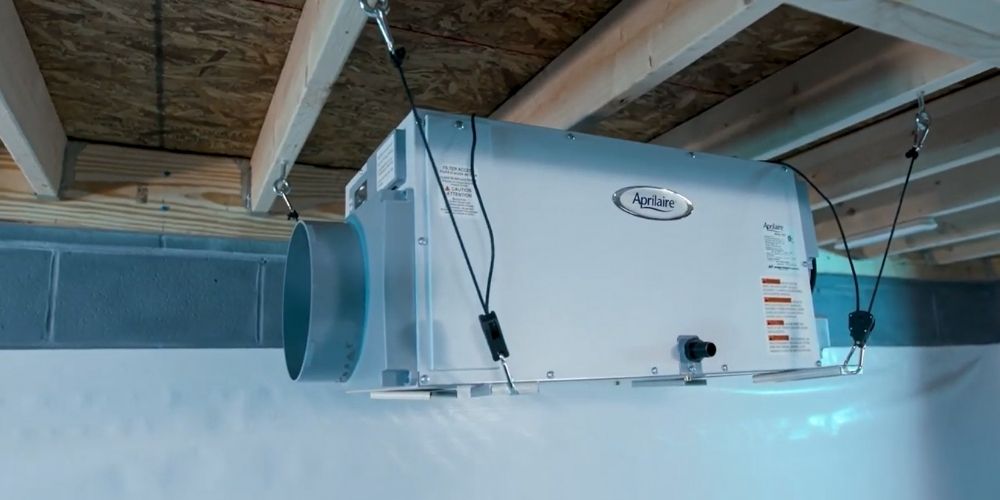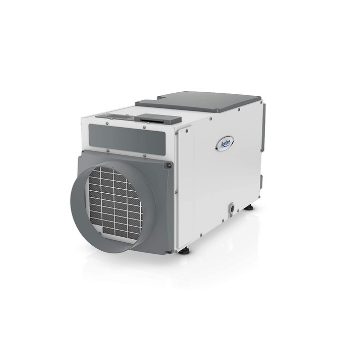How to drain dehumidifiers in crawl space?
3 Key Takeaways:
🚀 The key to a moisture-free crawl space is finding a dehumidifier that is the right size for your space and considering your drain options.
🚀 The manual process requires emptying messy trays and regular maintenance whereas the continuous mode makes use of gravity drain through a drain hose which offers simpler solutions.
🚀 The location of the dehumidifier in your crawl space is very important. Make sure it makes your draining process easier and ensure that no walls or other objects obstruct the flow of air.
The key to a moisture-free crawl space is finding a dehumidifier that is the right size for your space. You must measure the dimensions of your crawl space before making the purchase. Once you’ve done that, you want to also consider your drain options. Opting for a unit with a water tank will save you the hassle of constantly squeezing into your crawl space to drain the water. However, buying a unit with a drain hose would mean installing a gravity drain. A gravity drain system helps channel the condensation away from the dehumidifier. For a successful draining experience, there must be enough drip from the dehumidifier– a minimum of ¼ inch dept per 10 feet of running for the water to drain properly. If the area is too low, then the water can come back up quickly and flood your crawl space. Once you have a drain system, you can use inexpensive options like PVC or PEX to create a drain hose.
Most people would agree that combating moisture and humidity can be a tedious process. But many more would agree that finding mold and foul order in corners of their home is a lot worse than cleaning out a dehumidifier. Luckily dehumidifiers come in all shapes, functionality, and sizes so that even the smallest of spaces can be rid of humidity– including crawl spaces. It’s a known fact that, given the nature of their size and location, crawl spaces tend to trap a large amount of moisture very quickly. That’s why an easy way to prevent humidity build-up is to install an aptly sized dehumidifier. The trick is to also find the best drainage option to keep the crawl space dry for a long time.
The hardest part of dehumidifier installations is often figuring out the best location to place it because of drainage issues. Depending on the accessibility and size of your crawl space, you can choose a method that makes the process easy. Read on to learn why it’s important to tackle the issue of changing water early in the dehumidifier-buying process.
In this guide, we have compiled answers to your most pressing concerns about successfully setting up and draining dehumidifiers in crawl spaces.
Do crawl space dehumidifiers need to be emptied?
Most crawl space dehumidifiers come with two drainage options: Continuous and Manual. The manual process requires emptying messy trays and regular maintenance whereas the continuous mode makes use of gravity drain through a drain hose which offers simpler solutions. It is up to us to choose the mode of drainage that suits over requirements.
Where is the best place to put a dehumidifier in the crawl space?
The location of the dehumidifier in your crawl space is very important. This will not only define the amount of upkeep required to ensure the longevity of your dehumidifier, but it will also impact the success rate of keeping the space moisture-free. Make sure it makes your draining process easier. Ensure that no walls or other objects obstruct the flow of air. Placing it too close to a door, beam, or wall would create an imbalance in the dehumidifying process. It helps to consider which direction you want the moist air to be pulled from and in which direction you want the dry air pumped out. Lastly, make sure it is placed on level ground.
Where do crawl space dehumidifiers drain?
Unless it has a water tank that can be changed, the dehumidifier needs a designated gravity drain to collect condensation. Most crawls are not fitted with drains and are not designed for water drainage. But this is an easy fix. You can install a PVC pipe or PEX pipe to create a drain where the water from your dehumidifier can collect. But first, you need to ensure a minimum of ¼ inch depth for the drain and a downward slope for the water to flow. If the drain area is too low, there can be backflow and more moisture problems than before.
How much to install a dehumidifier in a crawl space?

Since it is not recommended to use a portable dehumidifier in a crawl space, the installation may need professional assistance. The dehumidifier alone costs between $1,500 to $2,500 with an installation cost of $800 to $1,600. It is different in the case of crawl space encapsulation, as that is over and above the cost of the unit and its installation. In milder climates, dehumidifying the crawl space may be enough to balance humidity levels throughout the home. It is best to prepare for an upfront cost of the unit and its installation.
Our pick for the best crawl space dehumidifier with drain:
The Aprilaire E100 Pro is perfect for crawl spaces, basements, offices, and homes. With a 100-pint condensation capacity, it works well for spaces of up to 5,500 square feet. It is Energy Star certified and designed to look like a small project, its compact size makes it easy to install in even the smallest of crawl spaces.
If placing it on the ground is not an option, it can also be purchased with a wall mount so it can be customized to your needs. Its smart sensing technology means it automatically starts to dehumidify a space when it senses a change in humidity level that is above the preset target. An added advantage of the compact size is that it can be placed over a floor drain for a hassle-free draining experience.
FAQ Section
1. How to drain a dehumidifier automatically?
An alternative to frequently changing water tanks manually and gravity drains is to install a condensate pump. An internal condensate pump is designed to trigger a float that forces the water to be pumped through the drain pipe when the reservoir of water has reached its limit. This water is pushed out automatically and into the termination spot that you have designated for your dehumidifier.
However, before installing a condensate pump, you need to make sure you have enough height for the water to drain and access to a power unit to operate the internal pump.
2. Why are crawl space dehumidifiers so expensive?
Crawl spaces are (literally) hotbeds for humidity and tend to trap a lot of moisture. They are also hard to reach and do not have enough space to easily install a dehumidifier. As a result, you need high-quality dehumidifiers for crawl spaces.
In addition to good quality devices, you must ensure that a proper drainage system has been installed for all the condensation. All of these factors contribute to the high cost attached to crawl space dehumidifiers.
3. How long does it take to dehumidify a crawl space?
This can vary depending on the size of the crawl space and the power of the dehumidifier being used. It can take anywhere between 8-10 hours to reduce the humidity.
However, it can take a few days to a week to see a consistent result and an optimum level of moisture in crawl spaces.
4. Does the crawl space dehumidifier run all the time?
Normally dehumidifiers are designed to run continuously until the surrounding space is dry. Once the water tank is full, there is an automatic shut-off feature. However, a dehumidifier must be running regularly to ensure that the optimum humidity temperatures are maintained over the course of time. However, this can change depending on weather conditions.
5. Does an encapsulated crawl space need a dehumidifier?
Encapsulated crawl spaces have an excess of moisture nine out of ten times, and the best way to combat this is to use a dehumidifier. Some obvious signs to look out for when assessing whether a particular crawl space needs a dehumidifier are foul odors, creaky or soggy floors, and finding mold and discoloration on surrounding walls. In fact, mildew and the presence of moisture droplets are early signs of excess humidity.
6. What should a dehumidifier be set at in a crawl space?
Ideally, a crawl space should be anywhere between 40% to 55% humidity. Dehumidifiers must be set at the same level to detect optimum temperatures and automatically shut off when the water tank is full, or the optimum temperature has been reached.
Wrapping Up
There is a multitude of reasons for using a dehumidifier. A damp environment can not only trigger allergies and breathing problems but can also cause property damage. When moist conditions go unchecked, it can often lead to damp walls, wood rot, and foul odors. Ever wondered why your wooden floors creek all the time? Or do you feel a big swelling in some parts of your living room floor? This is usually because there is a very high moisture level in your home or in the basement of your apartment.
By extracting moisture from the air, a dehumidifier keeps the airflow going and cools down a place. An unexpected perk of this could mean saving on air conditioner bills in summer. Often people give up on dehumidifiers because the installation work can feel tedious and off-putting.
However, understanding best practices and setting up a dehumidifier can go a long way in protecting your health and home. Finding an efficient system to drain condensation from dehumidifiers can be a game-changer. We hope this guide can help you with a few pointers to get you started.

About The Author
Olivia — a self-confessed air quality addict — is a home climate enthusiast, fresh air advocate, and someone with deep personal experience and knowledge about mold extermination. Her work was mentioned in countless notable humidity publications. Previously she was an editor at Mold Remediation.
